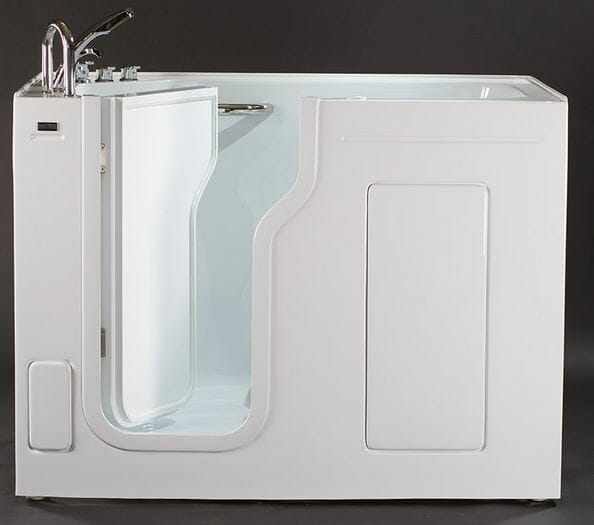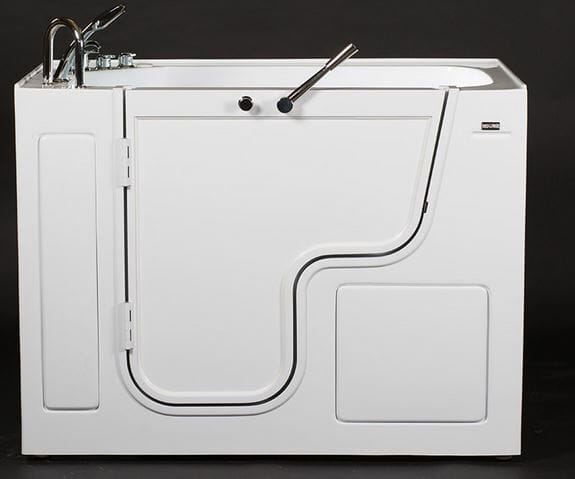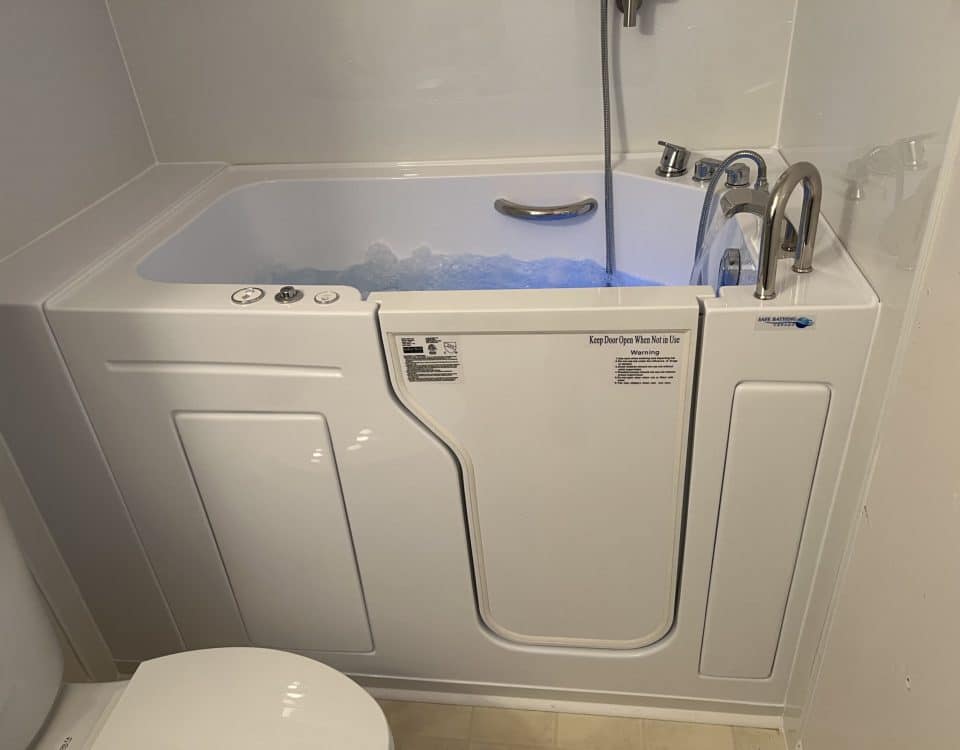
7 Factors to Consider When Buying a Walk-in Tub for Your Home
August 6, 2018
How to Fit a Walk-in Tub Into Your Small Bathroom
September 18, 2018The regular stand-alone style bathtub can present itself as quite the hazard for the elderly and people struggling with mobility.
According to a research shown by the State University of New York, “one in three adults in the U.S. have trouble getting in and out of a traditional tub.”
With its easy access and assisting features, a walk-in tub can present itself as a convenient and safe alternative.
Before starting the renovations, you need to be aware of some of the things to look out for and mistakes to avoid.
Mistake #1: Focusing On Price Rather Than Quality
Purchasing a walk-in tub will set you back anywhere between $5,000 and $12,000 including installation.
This is not a cheap investment although it is not wise to focus on solely the price while disregarding the quality. Doing so may be cheap now but it likely to become a very costly mistake in the future.
You need to ensure that you’re buying a from a certified brand that has passed tests by the American National Standards Institute.
Failure to do so will lead to you encountering issues during installation of the tub and later down the track, essentially resulting in you the need to spend an even greater deal of money in an attempt to fix the problems.
By purchasing a qualified brand, you’re able to rest assured with the knowledge that the walk-in tub is made from quality materials, and all fixtures and fittings are reliable.
Most qualified brands offer installation of the tub upon purchase, which is advantageous as they can be quite difficult to install properly.
As well as that, you’re also guaranteed to receive customer support and service should anything go wrong.
Mistake #2: Purchasing A Walk-In Tub With No Warranty
Just like any other big purchases you make, buying a tub without a lifetime warranty, or at least a 10 year warranty at the minimum, places a huge amount of risk on your purchase.
If something should go wrong, whether you went with a qualified brand or not, having no warranty or guarantee will put you out of pocket a great deal.
The most common fault that occurs with walk in tubs is the door seal failing. If this happens your tub is essentially useless and it can be quite costly to replace, especially since it is recommended a professional install the replacement.
This is just one of many problems that can be avoided by ensuring you have at least a 10-year warranty.
Your warranty protects you against having to spend extra money due to inevitable faults that occur due to usage, and in the unlikely event that an issue with your tub renders it useless, you’ll be covered for the cost a new one.
With such a large investment being made on a product that ideally needs to last you well over 10 years, a warranty is essential.
Mistake #3: Failure To Plan Correctly
Another detrimental mistake comes from not planning for the installation of your walk-in tub before making a purchase. Though this sounds simple it is one of the most common walk-in tub buying mistakes.
A great deal needs to be considered before making a purchase. Ensuring that your bathroom, and more importantly your doorways and hallways, have enough room to fit the tub is crucial.
A lot of the time, furniture can be moved and adjustments can be made to fit something as large as the walk-in tub, however, sometimes this is impossible.
There’s nothing worse than spending your money on an expensive tub only to find you can’t even transport it into your bathroom. You also need to ensure you purchase a walk-in tub that fits the layout of your bathroom.
Not having the correct plumbing fixtures also leads to major problems. You need to ensure that your tub and plumbing fixtures comply with the plumbing and building codes in your local area. One commonly forgotten fixture is the secondary drain that is required in the door fitting. Without this, your tub will not comply with the codes and you will not be able to install it in your home, again wasting your money.
Mistake #4: Underestimating The Amount Of Maintenance Required
Upon purchasing your walk-in tub, the intent is that it lasts a relatively long time which it usually will — provided you maintain and look after it.
When cleaning your tub, you need to be mindful of the type of material your tub is made of. Using the wrong cleaning agents can potentially damage the tub and ruin its finish.
Most walk-tubs are made from acrylic of fiberglass but it’s recommended that you find out upon purchasing it.
An often forgotten area to keep clean is the rubber seal around the door. Forgetting to clean this area allows for residue build-up which may result in the door not sealing properly.
As you can imagine this will cause water to leak out and flood your bathroom floor, which is not an easy mess to clean up.
Failure to properly clean your tub after using any kind of bath oil or other oily substance will not only result in damage to the tub’s finish, but the build-up creates a potential slipping hazard.
The whole purpose of a walk-in tub is to increase the safety of those using it but failed to get rid of the oil build up defeats the purpose.
Mistake #5: Not Replacing Your Water Heater
A very common mistake when purchasing a walk-in tub is not realizing that the water heater in many households requires replacing with a more powerful one.
Walk-in tubs are generally bigger than traditional bathtubs and require a lot more water to fill up to the level required to properly bathe the person using them.
The last thing you want to do is wait the considerable amount of time that most generally take to fill up, only for the water to be cold by the time the tub is full.
A powerful water heater is required to ensure that the temperature is comfortable but more importantly so that the killing of germs is effective.
Water around 104-130 degrees Fahrenheit is required to properly clean and sanitize the skin.
Water heaters can be costly and not considering this into your budget may result in you having to opt for a cheaper, lower quality walk-in tub.
Wrap Up
While walk-in tubs provide a very safe and helpful solution to properly caring for those who aren’t able to safely or easily use a traditional bathtub, it is important to research extensively and plan ahead to avoid the mistakes that can so easily be made.
Preparation and proper maintenance will ensure the life of your investment is a long one.




